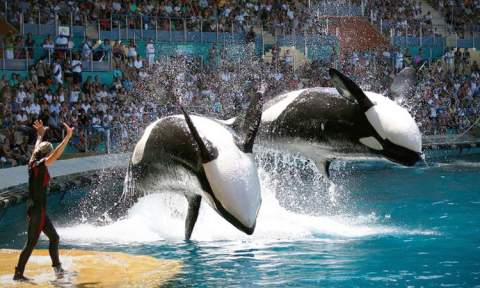 |
| Lolita at the Miami Seaquarium |
|
SeaWorld to Upgrade Killer Whale Habitats
 By Tom Gara
By Tom Gara
"SeaWorld Entertainment Inc. (
SEAS),
suffering from negative publicity and flagging attendance, plans to
announce on Friday a new expansion of the
habitats housing its signature
killer whales."
First let's define the word habitat, because saying you are going to upgrade a captive marine mammal's habitat sounds upbeat, doesn't it? Like adding wallpaper to a prisoner's cell at San Quentin or Sing Sing, and putting in a porcelain toilet with a heated seat.
Encarta ® World English Dictionary © defines habitat as:
1. ecology home environment: the natural conditions and environment in which a plant or animal lives, e.g. forest, desert, wetlands, OR OCEAN.
2. typical location: the place in which a person or group is usually found -- OR OCEAN.
3. artificially created environment: a sealed controlled environment in which people OR CAPTIVE ANIMALS can live OR BE KEPT ALIVE in unusual conditions such as under the sea or in space. OR IN A CONCRETE TANK.
"The company is locked in a battle with animal-rights activists, who say
that training and publicly performing killer whales is an inherently
cruel act. The documentary "Blackfish," which has been screened in
cinemas and broadcast multiple times by CNN, raised these criticisms to a
higher level of public awareness, and has harmed the company's
financial results."
So SeaWorld's solution: Add 15 feet of depth to their pool and 5 million more gallons of water.
Happy Whales. And their real motivation?
"Investors haven't been kind. SeaWorld shares fell by one-third on
Wednesday and are off nearly 50% over the past 12 months. The stock
declined another 4.8% to $18 on Thursday."
 We can still fix this by not going to SeaWorld or the Miami Seaquarium, now or ever.
We can still fix this by not going to SeaWorld or the Miami Seaquarium, now or ever.
 |
| Lolita is 21 feet long in a tank that is 23 feet deep. She shares this space with 3 Pacific White-sided dolphins. It has been her habitat for 44 years. |











